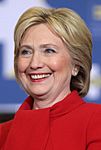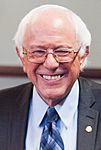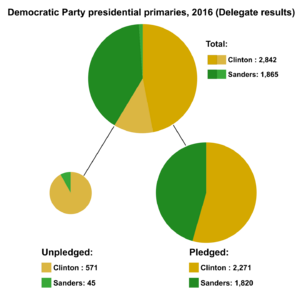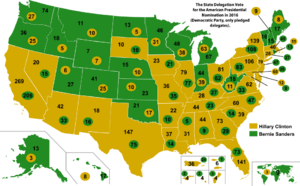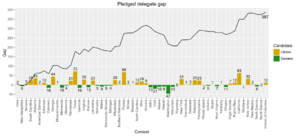Results of the Democratic Party presidential primaries, 2016 facts for kids
|
|||||||||||||
|
4,765 delegates to the Democratic National Convention 2,383 delegates votes needed to win |
|||||||||||||
|---|---|---|---|---|---|---|---|---|---|---|---|---|---|
|
|||||||||||||
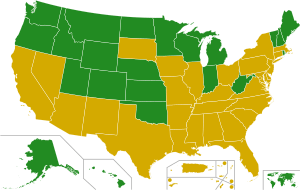
First place (popular vote or delegate count)
Hillary Clinton Bernie Sanders
|
|||||||||||||
|
|||||||||||||
The Democratic Party presidential primaries in 2016 were a series of elections. These elections helped the Democratic Party choose their best candidate for president of the United States. People in each state voted for the person they thought would be a good president. Based on these votes, candidates earned a certain number of "delegates." These delegates then went to the Democratic National Convention to officially pick the party's nominee.
The primaries started on February 1, 2016, in Iowa. The two main candidates who stayed in the race were Hillary Clinton and Bernie Sanders. Hillary Clinton was a former United States Secretary of State and First Lady of the United States. Bernie Sanders was a senator from Vermont.
On June 6, 2016, news sources like the Associated Press reported that Hillary Clinton had enough delegates to likely become the Democratic nominee. This count included "superdelegates." Superdelegates are special delegates who can change their minds about who they support. Because of this, it was technically possible, but very unlikely, that Clinton would not get the nomination. Bernie Sanders later supported Hillary Clinton on July 12, 2016.
Contents
Who Ran for President?
This section introduces the main people who wanted to become the Democratic Party's candidate for president.
Main Candidates
These candidates stayed in the race until the end of the primaries.
- Hillary Clinton – She was the 67th United States Secretary of State from 2009 to 2013. She also served as the First Lady of the United States from 1993 to 2001. Before that, she was a senator for New York from 2001 to 2009.
- Bernie Sanders – He has been a senator for Vermont since 2007. Before becoming a senator, he was a representative from 1991 to 2007.
Candidates Who Left During the Primaries
Some candidates started the race but decided to stop before all the states had voted.
- Martin O'Malley – He was the governor of Maryland from 2007 to 2015. He also served as the Baltimore mayor from 1999 to 2007.
Candidates Who Left Before the Primaries Started
These candidates decided not to continue their campaigns before the official voting began.
- Jim Webb – He was a Virginia senator from 2007 to 2013. He also served as the Secretary of the Navy from 1987 to 1988.
- Lincoln Chafee – He was the governor of Rhode Island from 2011 to 2015. He was also a senator from 1999 to 2007 and the Warwick mayor from 1993 to 1999.
- Lawrence Lessig – He is a professor.
How the Candidates Did
The candidates earned "delegates" based on how many votes they received in each state. Delegates are like representatives who vote for a candidate at the Democratic National Convention. To win the nomination, a candidate needed to get 2,383 delegates.
The table below shows the final results for the main candidates, including the number of delegates they won.
| Candidates |  Hillary Clinton |
 Bernie Sanders |
 Martin O'Malley |
|
|---|---|---|---|---|
| Pledged delegates | 2,219 | 1,832 | 0 | |
| Unpledged delegates | 581 | 49 | 1 | |
| Total delegates | 2,800 | 1,881 | 1 | |
| Contests won | 34 | 23 | 0 | |
* The delegate counts are estimates. If you add all the delegates listed, the total might be slightly different from the overall total at the top of the table. This table also only shows pledged delegates, not superdelegates.
Related Pages


